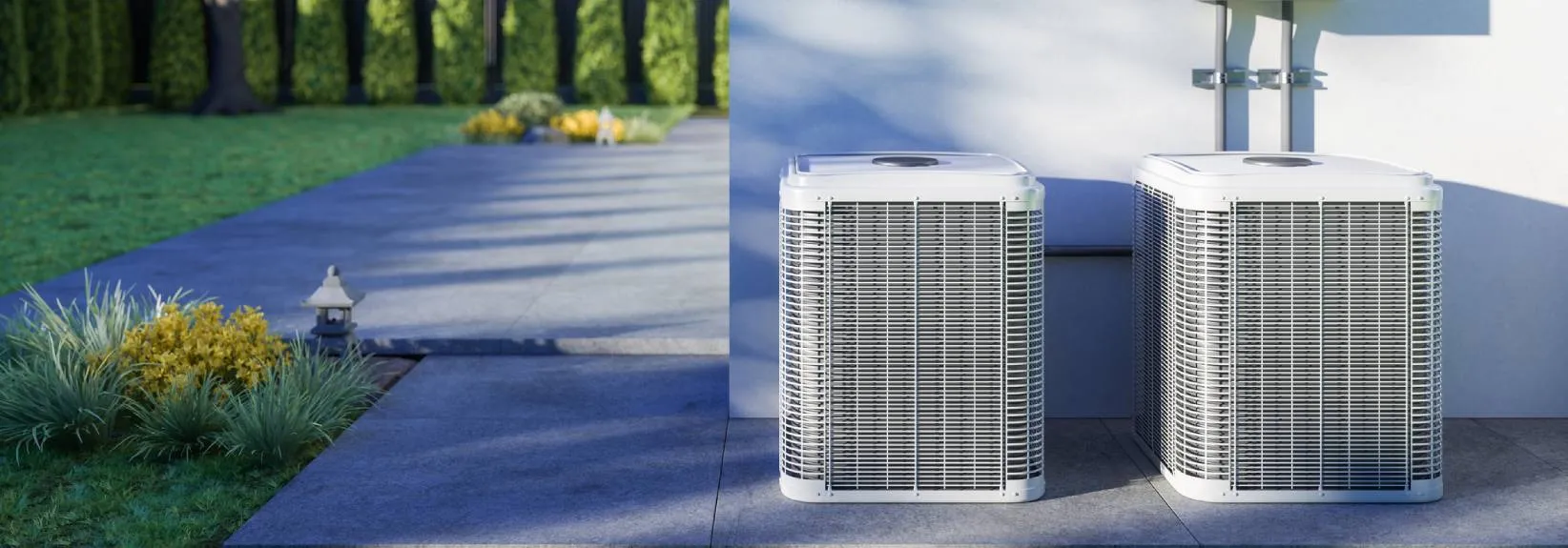Air Conditioner vs. Air Handler
If you’re looking for heating and cooling services, you may come across confusing, sometimes contradictory information about different HVAC systems. One component that garners plenty of confusion is the air handler. Is this the same as an air conditioner? We’re here to set the record straight.
What Is an Air Handler?
An air handler is the indoor portion of some types of HVAC systems. It connects to a network of air ducts that distribute conditioned air throughout the building. Air handlers vary in size, type and capacity, depending on the application.
Some people use the terms “air handler” and “blower” interchangeably, but this is not accurate. An air handler is an entire unit containing a blower and several other components, all of which work together to condition and circulate the air.
Does an Air Conditioner Use an Air Handler?
Normally, an air conditioner [shares|uses|utilizes} the furnace’s blower motor, so no air handler is needed. However, in climates where home heating is not required, an air conditioner may be the only HVAC equipment present. In this case, the indoor air handler works in conjunction with the outdoor unit, called the condenser.
In this setup, the AC unit’s air handler [blows|forces|pushes} indoor air [across|over|along the outside of} the evaporator coil, which absorbs heat and collects moisture, leaving the air handler to distribute cooled, dehumidified air back into the building via ductwork. Refrigerant lines connect the air handler to the outdoor condenser, facilitating the heat transfer to the outside. This allows air conditioning to maintain a constant, comfortable indoor temperature and humidity level.
Does a Heat Pump Use an Air Handler?
This is where air handlers are most commonly found. In cold climates where heat pumps are less reliable, they are sometimes installed alongside furnaces, creating what’s known as a dual-fuel system. However, advancements in cold-climate heat pumps make dual-fuel systems less common these days. Without a furnace to lend its blower motor, heat pumps need a dedicated air handler to circulate conditioned air.
Heat pumps work by extracting heat from the outside air and transferring it inside via the indoor coil. The air handler blows air across the coil to collect heat before circulating it throughout the building. A heat pump can also be used for cooling, where it extracts heat from the indoor air and transfers it outside, just like an air conditioner.
Does a Furnace Use an Air Handler?
No. Furnaces come with a blower motor to circulate conditioned air. The blower is typically located inside the furnace. It blows air across the heat exchanger, a metal component that transfers heat from a fuel source to the air blowing past it. The fuel source can be natural gas, propane or oil, which is ignited to generate heat. Once warmed, the air circulates back through the ductwork system and into the building.
What Are the Parts of an Air Handler?
The main parts of an air handler include:
- Blower: The blower is a motor-driven fan that circulates air through the ductwork. It moves air across the heating or cooling elements to regulate the indoor temperature.
- Heating or cooling elements: Depending on the type of HVAC system you have, the air handler may contain heating or cooling elements, including an evaporator coil or backup electric heat strip.
- Air filter: An HVAC air filter removes dust, dirt and other contaminants from the air as it enters the air handler to be heated or cooled. Air filter types and efficiency ratings vary depending on system requirements. Remember to replace your air filter regularly to prevent restricting airflow through the system.
- Dampers: Dampers are used to control airflow in buildings with zoned heating and cooling. They can be manually or automatically operated to direct air to specific rooms as needed to maintain a comfortable temperature.
- Humidifier or dehumidifier: Some air handlers include a humidifier or dehumidifier, which regulates the indoor relative humidity level. A humidifier adds moisture into the air in the winter, while a dehumidifier removes moisture in the summer.
- Control system: The control system is responsible for regulating the air handler. It may include a thermostat, humidistat or other sensors to monitor the temperature and humidity in the building.
Schedule Air Conditioner or Air Handler Repair
If you’re experiencing issues with your air conditioner, air handler or other HVAC components, Service Experts Heating & Air Conditioning is here to help. Our team of experienced technicians can diagnose and repair any problems with your climate control system, ensuring it runs safely and efficiently. We believe in our excellent work so much that we back every repair with a one-year 100% satisfaction guarantee! For more information or to request air conditioning repair in North America, please contact a Service Experts office near you today.
